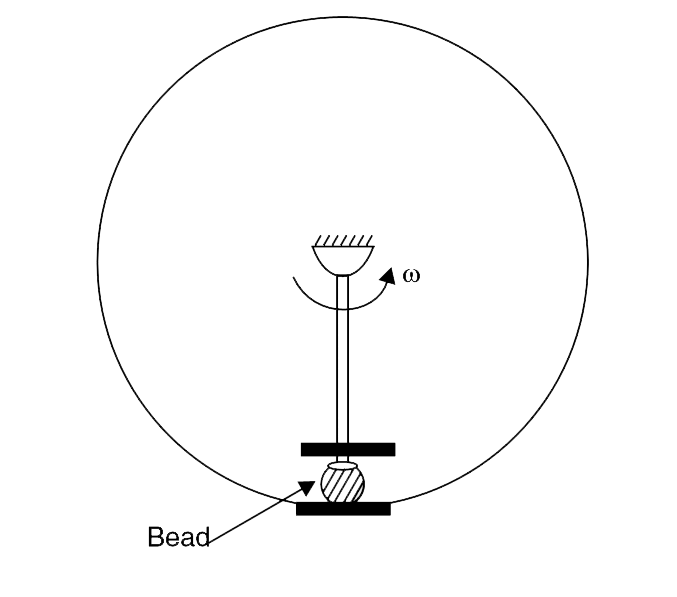A metal rod of 1 m length, is dropped exact vertically on to hard metal Noor. Plate capacitor is to be designed, it is determined that the impact produces a longitudinal wave of 1.2 kHz frequency. The speed of sound in the metal rod is:
600 m/s
2400 m/s
1800 m/s
1200 m/s
The correct Answer is:B
f=V2l
1.2×103Hz=V2×1
V=2.4×103m/s
Topper's Solved these Questions
Similar Questions
A steel rod 100 cm long is clamped at its middle. The fundamental frequency of longitudinal vibrations of the rod is given to be 2.53k Hz. What is the speed of sound in steel?
View SolutionA steel rod 100 cm long is clamped at its centre. The fundamental frequency of longitudinal vibrations of the rod are given to be 2.53kHz. What is the speed of sound in steel?
View Solution
Knowledge Check
In a Kundt's tube , the length of the iron rod is 1m. The stationary waves frequency 2500Hz are produced in it. The velocity of sound in iron is
A1250m/sB2500m/sC5000m/sD10,000m/sA metal rod 40cm long is dropped on to a wooden floor and rebounds into air . Compressional waves of many frequencies are thereby set up in the rod . If the speed of compressional waves in the rod in 5500m/s, what is the lowest frequency of compressional waves to which the rod resonates as it rebounds?
A675HzB6875HzC16875HzD0HzA uniform metal rod of length 1m is bent at 90∘, so as to form two arms of equal length. The centre of mass of this bent rod is
Aon the bisector of the angle, (1√2) m from vertexBon the bisector of angle, (12√2) m from vertexCon the bisector of the angle, (12) m from vertexDon the bisector of the angle, (14√2)m from vertex
A copper rod of length 1.0 m is clamped at its middle point. Find the frequencies between 20 Hz and 20,000 Hz at which standing longitudinal waves can be set up in the rod. The speed of sound in copper is 3.8kms−1.
View SolutionA metallic rod of length 1m is rigidly clamped at its end points. Longitudinal stationary waves are setup in the ord in such a way that there six antinodes of displacement wave observed along the rod. The amplitude of the anotinode is 2×10−6m. Write the equations of the stationary wave and the component waves at the point 0.1m from the one end of the rod.
[Young modulus =7.5×1010N/m2, density =2500kg/m3]
View SolutionA metallic rod of length 1m is rigidly clamped at its midpoint. Longitudinal stationary waves are set up in the rod in such a way that there are two nodes on either side of the mid - point and those of constituent waves in the rod . (Y=2×1011N/m2andρ=8×103kg/m3)
View SolutionA rigid mass less rod of length L is rotating in a vertical plane about a horizontal axis passing through one of its ends. At the other end of the rod there is a mass less metal plate welded to the rod. This plate supports a heavy small bead that can slide on the rod without friction. Just above the bead there is another identical metal plate welded to the rod. The bead remains confined between the plates. The gap between the plates is negligible compared to L. The angular speed of the rod when the bead is at lowest position of the circle is ω=2√gL. How many times a clink of the bead hitting a metal plate is heard during one full rotation of the rod ?

View SolutionAn aluminimum rod 1.60m long is held at its centre. It is stroked with a rosin - coated cloth to set up a longitudinal vibration. The speed of sound in thin rod of aluminium is 5100m/s. (a) What is the fundamental frequency of the waves established in the rod ? (b) What harmonics are set up in the rod held in this manner ? (c ) What would be the fundamental frequency if the rod were copper , in which the speed of sound is 3650m/s?
View Solution
